 |
|
|
| , | ||||
 Azurite is a soft, deep blue copper mineral produced by weathering of copper ore deposits. It is also known as Chessylite after the type locality at Chessy-les-Mines near Lyon, France.[2] The mineral has been known since ancient times, and was mentioned in Pliny the Elder's Natural History under the Greek name kuanos : "deep blue," root of the English word cyan, and the Latin name caeruleum. Azurite crystals are monoclinic, and when large enough to be seen they appear as dark blue prismatic crystals. Azurite specimens are typically massive to nodular, and are often stalactitic in form. Specimens tend to lighten in color over time due to weathering of the specimen surface into malachite. Azurite is soft, with a Mohs hardness of only 3.5 to 4. The specific gravity of azurite is 3.77 to 3.89. Azurite is destroyed by heat, losing carbon dioxide and water to form black, powdery copper(II) oxide. (source: Wikipedia) The 2rd photo below shows nodules of Azurite on a large piece of malachite from Arizona, and is on display at the Mewbourne College of Earth & Energy at the University of Oklahoma Photos by Michael Marcotte 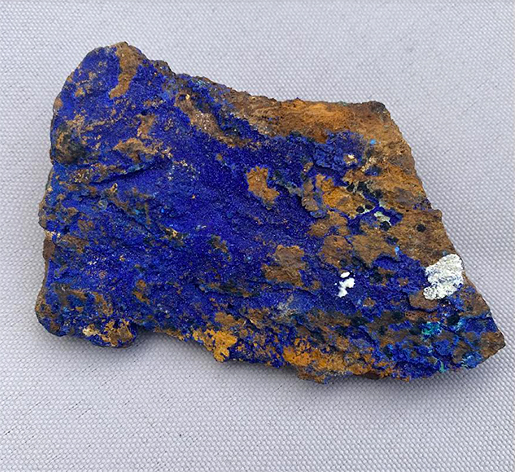 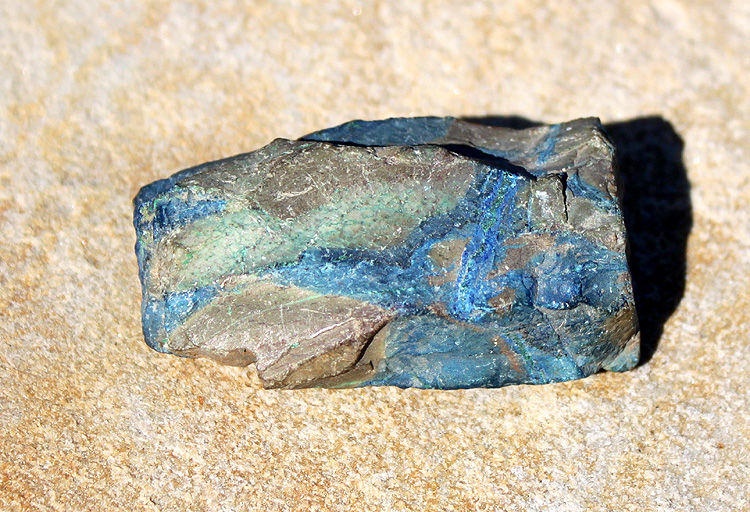 poor quality azurite with low color saturation 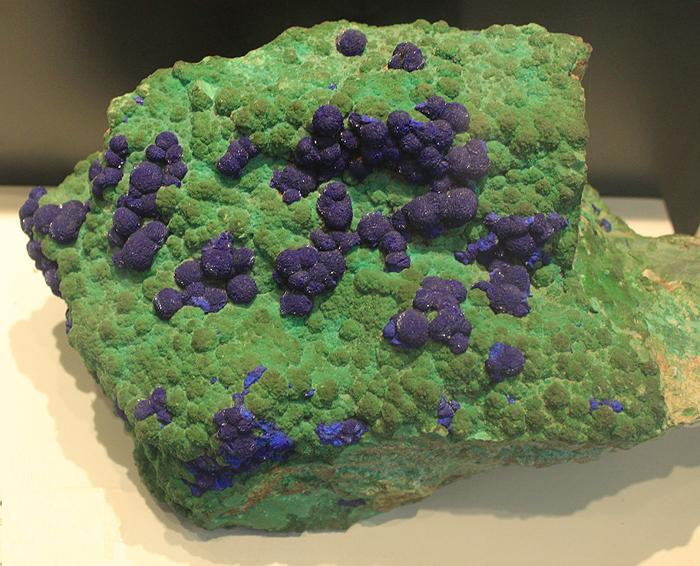 Green is malachite, natural luster with purplish-blue Azurite nodules 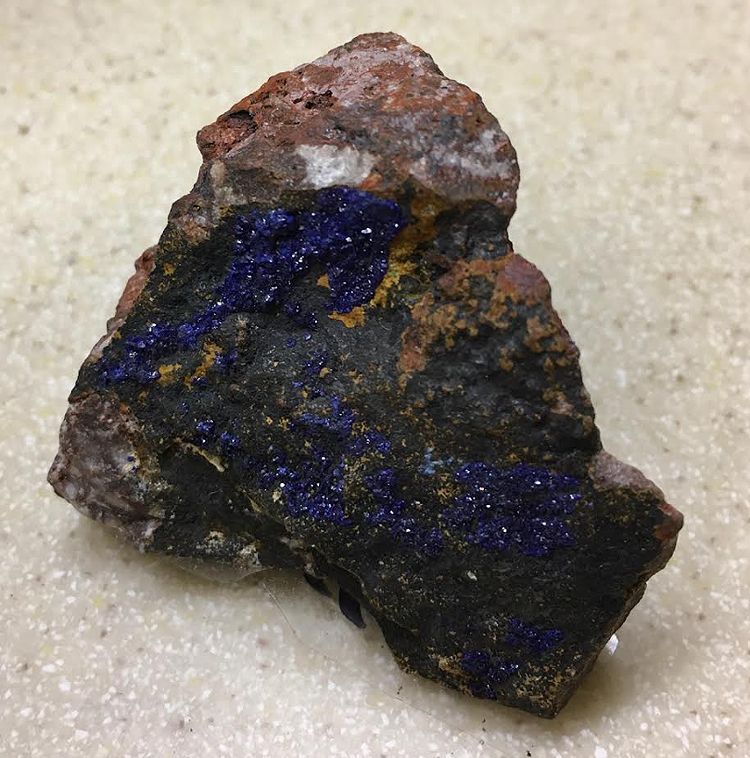 azurite from Morocco (photo by Michael Marcotte) Return to List Back to Michael's Hobbies page Back to Michael Marcotte's HomePage 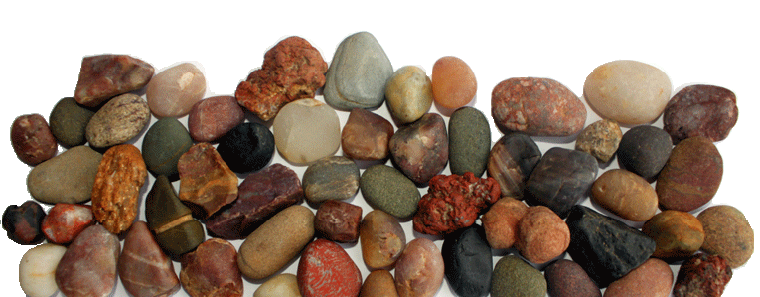
|
||||